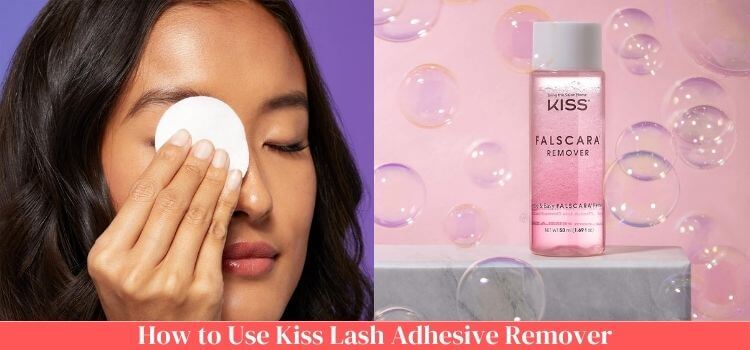As an Amazon Associate, I earn from qualifying purchases.

Lip gloss, which gives lips a hint of color and sheen, has become a mainstay in many people’s beauty regimens. But have you ever wondered what goes into making that small, glamorous gloss tube? In this article, we’ll delve into the evolution of lip gloss, explore the ingredients used, and answer the burning question: What animal is lip gloss made of?
1. Introduction
Lip gloss has a fascinating history, evolving from its humble beginnings to a must-have cosmetic bag item. Let’s take a journey through time to understand its transformation.
2. The Evolution of Lip Gloss
2.1 Origins and Early Formulas
Lip gloss has been enhancing lips for centuries, with early formulations utilizing natural ingredients like beeswax and plant-based oils. These rudimentary glosses provided a subtle shine, setting the stage for the glossy lips we know today.
2.2 Lip Gloss in the Modern Era
In the mid-20th century, we witnessed the commercialization of lip gloss. With advancements in cosmetic technology, brands began introducing innovative formulas, marking the beginning of the glossy lip trend.
What Animal is Lip Gloss Made Out Of
3. Ingredients in Lip Gloss
To uncover the answer to our question, we must explore the makeup lip gloss ingredients.
3.1 Base Ingredients
Lip gloss typically contains a base, often a mixture of oils and waxes. These create a smooth texture, making the application effortless.
3.2 Colorants and Pigments
Adding color to lip gloss involves the use of pigments and dyes. This step is essential to getting the proper lip color.
3.3 Shiny Substances
The shine in lip gloss comes from various shiny substances, each contributing to the glossy finish that is the hallmark of this cosmetic product.
4. Animal-Derived Ingredients in Lip Gloss
In the past, many lip gloss formulations included animal-derived ingredients. Let’s explore some of these components.
4.1 Beeswax
Beeswax, derived from honeybees, was commonly used in lip gloss for its emollient properties. However, with growing awareness of environmental impacts, alternatives are gaining popularity.
4.2 Lanolin
Lanolin, extracted from sheep’s wool, provided moisturizing benefits in lip gloss. Today, vegan alternatives are being embraced by conscious consumers.
4.3 Carmine
In the past, lip cosmetics included carmine, a scarlet color made from crushed cochineal insects. As demand for cruelty-free options rises, alternatives are being sought.
5. Alternatives to Animal-Derived Ingredients
There has been a change in the beauty business toward vegan and cruelty-free products. Let’s explore alternatives to animal-derived ingredients in lip gloss.
5.1 Vegan Lip Gloss Options
Vegan lip glosses exclude animal by-products, offering a guilt-free option for makeup enthusiasts. Brands are increasingly formulating products that align with ethical and environmental values.
5.2 Synthetic Colorants
The development of synthetic colorants has decreased the need for pigments obtained from animals as a result of advances in cosmetic science. This not only addresses ethical concerns but also expands the color range available.
6. Sustainability in Lip Gloss Production
The beauty industry adjusts to satisfy the expectations of increasingly ecologically conscious consumers.
6.1 Environmentally Friendly Packaging
Recyclable materials and less plastic are used in packaging, which is becoming a standard feature of eco-friendly lip gloss products.
6.2 Cruelty-Free Testing
Eliminating animal testing in the production of lip gloss is a crucial step towards a more ethical beauty industry. Brands committed to cruelty-free practices are gaining popularity.
7. Common Misconceptions About Lip Gloss Ingredients
Let’s address some misconceptions surrounding lip gloss ingredients.
7.1 Myth: Lip Gloss Contains Fish Scales
Contrary to popular belief, lip gloss does not typically contain fish scales. This myth stems from a misunderstanding of the ingredients used in cosmetics.
7.2 Clarifying the Misconceptions
Understanding the actual composition of lip gloss helps dispel myths and allows consumers to make informed choices about the products they use.
8. Choosing Lip Gloss Mindfully
With so many options available, selecting a lip gloss that is appropriate requires careful thought.
8.1 Reading Ingredient Lists
Awareness of lip gloss ingredients empowers consumers to make choices aligned with their values, whether cruelty-free, vegan, or environmentally friendly.
8.2 Supporting Ethical Brands
Choosing lip gloss from brands committed to ethical practices supports the industry’s positive transformation towards sustainability.
9. The Future of Lip Gloss Ingredients
As the beauty industry evolves, so do the ingredients in lip gloss.
9.1 Innovations in Sustainable Ingredients
Researchers are actively exploring sustainable alternatives to traditional lip gloss ingredients, paving the way for a more eco-friendly future.
9.2 Consumer Awareness and Demand
With consumers becoming more informed and demanding ethical choices, brands are adapting their formulations to meet these expectations.
10. Conclusion
Lip gloss has come a long way, and its ingredients continue to evolve. Whether you prefer traditional formulations or cruelty-free, vegan options, the beauty industry now offers choices that align with diverse values.
11. FAQs
11.1 Is lip gloss made from animal products?
No, not all lip glosses are made from animal products. Many brands offer vegan and cruelty-free options.
11.2 Are there vegan options for lip gloss?
Yes, plenty of vegan lip gloss options are available today.
11.3 What is the main purpose of lip gloss?
The main purpose of lip gloss is to add shine and subtle color to the lips, enhancing their appearance.
11.4 Can lip gloss be harmful to the environment?
Certain lip gloss formulations and packaging can contribute to environmental harm. Choosing eco-friendly options can mitigate this impact.
11.5 How do I choose the suitable lip gloss for me?
Consider your values, such as cruelty-free, vegan, or sustainable options. Reading ingredient lists and supporting ethical brands will help you make the right choice for your needs.






